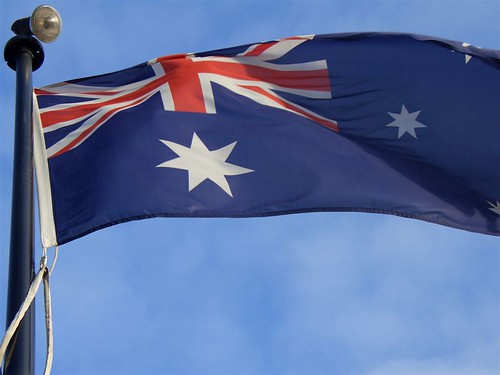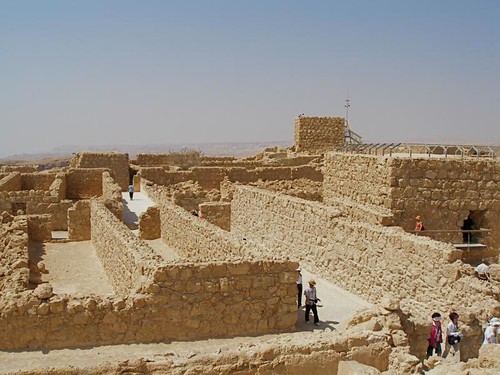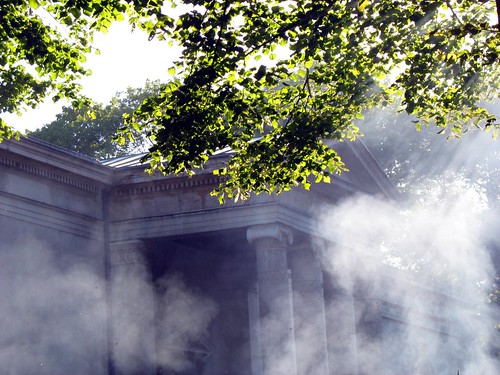Crimean War (October 1853 – February 1856), war fought mainly on the Crimean Peninsula between the Russians and the British, French, and Ottoman Turkish, with support, from January 1855, by the army of Sardinia-Piedmont. The war arose from the conflict of great powers in the Middle East and was more directly caused by Russian demands to exercise protection over the Orthodox subjects of the Ottoman sultan. Another major factor was the dispute between Russia and France over the privileges of the Russian Orthodox and Roman Catholic churches in the holy places in Palestine.
This war gave the world:
- Raglan sleeves (named after the 1st Baron Raglan, probably because it was designed to fit his coat for the arm lost in the Battle of Waterloo),
- The cardigan sweater (named after James Thomas Brudenell, 7th Earl of Cardigan, a British military commander, during his service in the Crimean War.),
- The balaclava cap (The name “balaclava” comes from the town of Balaklava in Crimea. During the Crimean War, knitted balaclavas were sent over to the British troops to help protect them from the bitter cold weather.),
- Florence Nightingale (her most famous contribution came during the Crimean War, which became her central focus when reports began to filter back to Britain about the horrific conditions for the wounded.),
- The “Charge of the Light Brigade” immortalized by Alfred, Lord Tennyson (a disastrous cavalry charge led by Lord Cardigan during the Battle of Balaclava on October 25, 1854 in the Crimean War. It is best remembered as the subject of a famous poem entitled The Charge of the Light Brigade by Alfred, Lord Tennyson, whose lines “Theirs not to reason why / Theirs but to do and die” have made the charge a symbol of warfare at both its most courageous and its most tragic.)
- And the epic novel War and Peace by Count Leo Tolstoy who was there as a young Russian artillery officer, and who’s experiences in Sevastopol did much to shape War and Peace.
Why this war was important
Changed the balance of power in Europe, weakening Russia, strengthening the imperiled Ottoman Empire, and leaving France the greatest military force in Europe, while Britain remained the greatest naval power. Austria gained strength both Germany and Italy achieved long-awaited unification, and the US, hardly an innocent bystander in this conflict, used its friendship with Russia to take possession of Alaska and Hawaii. Also, despite what American Civil War historians have said, it was the first war to be reasonably well documented by photographers, the first to take place in the age of the telegraph, the railroad, and steam-driven ships, the first in which mines played a significant role in naval warfare, and the first to propose a major use of chemical warfare. There were even war plans for a submarine and a proto-tank.
Because the British allowed newspaper correspondents to witness what went on and to write about it without censorship, the British public and later much of the world knew what was happening as in no previous war ever fought. The French imposed strict censorship during the war, but later a number of French officers managed to write about their experiences, as did the Sardinian’s, who joined the allied cause later in the war. The Turks wrote little, but the Russians wrote much.
How and why the war started
Tsar Nicholas I (who by the way was 6’ 4” tall) needed Mediterranean access. To do so he would have to reach an agreement with the Turks, but that would be meaningless if Britain’s powerful navy chose to block the way. The tsar tried to ally himself with the British but they refused.
Frustrated by his failure to convince the British to join him, as well as by the Turkish inflexibility, the tsar next sent Prince Alexander S. Menhikov to convince the Turks to accept Russian rule over the holy cities, a role that singularly ill suited the acid-tongued elderly nobleman, who hated the Turks. Menhikov did a horrible job. He offended the Turks often and threatened war whenever the Turks were difficult.
To deter Menhikov’s threats France and Britain responded with a threat to occupy Moldovia and Wallachia (now Romania) if the Turks did not give into Menhikov’s demands. The Turks ignored this. The tsar was not bluffing. On July 3, 1853, Russian troops marched into Moldiva and Wallachia heading for the Danube River. This area was under a kind of joint rule. The Turks had governors there, but no troops. The Turks did not receive tribute from the 2.3 million residents of this area.
Russia’s invasion was clearly provocative. Russia now claimed the tribute for itself, but no fighting was involved.
Austria called for a conference in Vienna. It was attended by Britain, France and Prussia but not Turkey or Russia. The conference produced an agreement acceptable to all parties in attendance.
The Turks were sent the agreement. They made some minor changes. Russia would not accept these new changes. The Turks responded with an ultimatum. When Russia did not responded by withdrawing its troops, Turkey declared war on October 5, 1853, sending 90,000 troops toward the Danube and 75,000 East toward the Caucasus.
Supported by Britain, the Turk’s took a firm stand against the Russians, who occupied the Danubian principalities (modern Romania) on the Russo-Turkish border July 1853. The British fleet was ordered to Constantinople (Istanbul) on September 23. On October 4 the Turks declared war on Russia and in the same month opened an offensive against the Russians in the Danubian principalities. After the Russian Black Sea fleet destroyed a Turkish squadron at Sinope, on the Turkish side of the Black Sea, the British and French fleets entered the Black Sea on January 3, 1854, to protect Turkish transports. On March 28 Britain and France declared war on Russia. To satisfy Austria and avoid her also entering the war, Russia evacuated the Danubian principalities. Austria occupied them in August 1854. In September 1854 the allies landed troops in Russian Crimea, on the north shore of the Black Sea, and began a yearlong siege of the Russian fortress of Sevastopol. Major engagements were fought at the Alma River on September 20, at Balaklava on October 25, and at Inkerman on November 5. On January 26, 1855, Sardinia-Piedmont entered the war and sent 10,000 troops. Finally, on September 11, 1855, three days after a successful French assault on Malakhov, a major strong point in the Russian defenses, the Russians blew up the forts, sank the ships, and evacuated Sevastopol. Secondary operations of the war were conducted in the Caucasus and in the Baltic Sea.
The war ends
The fall of Sevastopol ended the major fighting. For the warring countries and world opinion, Sevastopol was the key to victory; soon after its surrender, Austrian threats to enter the conflict, probably to be joined by Sweden and perhaps Norway, led Russia to negotiate, and peace followed. Russia accepted preliminary peace terms on Feb. 1, 1856. The Congress of Paris, a long discussion between French, British, and Austrian dominated peace conference, worked out the final settlement from February 25 to March 30, 1856, guaranteed the integrity of Ottoman Turkey and obliged Russia to surrender southern Bessarabia, at the mouth of the Danube, which was opened to the shipping of all nations. Russian dominance in Eastern Europe would end, and all the European powers guaranteed the independence and integrity of the Ottoman Empire. Turkey was left deeply in debt to France and Britain, but the peace treaty meant having twenty years of breathing room before another war with Russia began the final collapse of the Ottoman Empire.
The Crimean War was managed and commanded very poorly on both sides. Disease accounted for a disproportionate number of the approximately 250,000 men lost by each side.
Total Casualties of the war are probably over one million, in addition to an untold number of men, women, and children left permanently disabled by wounds or debilitated by disease.
- ½ million deaths = Russian
- ½ million deaths = Turkish
- 100,000 = French
- 25,000 = British
- 2,000 = Italian
The war did not settle the relations of the powers in Eastern Europe. It did awaken the new Russian emperor Alexander II (who succeeded Nicholas I in March 1855) to the need to overcome Russia’s backwardness in order to compete successfully with the other European powers. A further result of the war was that Austria, having sided with Great Britain and France, lost the support of Russia in central European affairs. Austria became depended on Britain and France, which failed to support her, leading to the Austrian defeats in 1859 and 1866, which in turn led to the unification of Italy and Germany.
America’s Involvement
Few accounts of Crimean War mention the involvement of America, but American interest in the war was intense. Major newspapers throughout the country carried hundred of articles. The newspapers in America began to take Russia’s side. After all the French and other European governments had recently criticized American aggression in their war of expansion against Mexico. This hardened American attitudes toward France. As soon as the Crimean War broke out American Colonel Sam Colt went to Moscow to sell his famous revolvers and rifles. Other arms merchants followed his example. 15 American mechanics arrived to help with Russian railroad development. The US minister to Russia Thomas Seymour adored Tsar Nicolas I. 30 American surgeons (20 of who trained in Paris) volunteered to go to Sevastopol, where they were welcomed enthusiastically; half of them would die of disease before the war ended. 300 Kentucky riflemen asked the US government for permission to fight for Russia, but their request was denied.
Russia would later express its gratitude. Including approval of the Annexation of Hawaii by the US and support for the Union during the American Civil War. Perhaps most important, first leased then later sold, Alaska to the United States. Rather than risk its seizure by Great Britain.
Resources:
Encyclopedia Britannica Vol. 3 p.737






